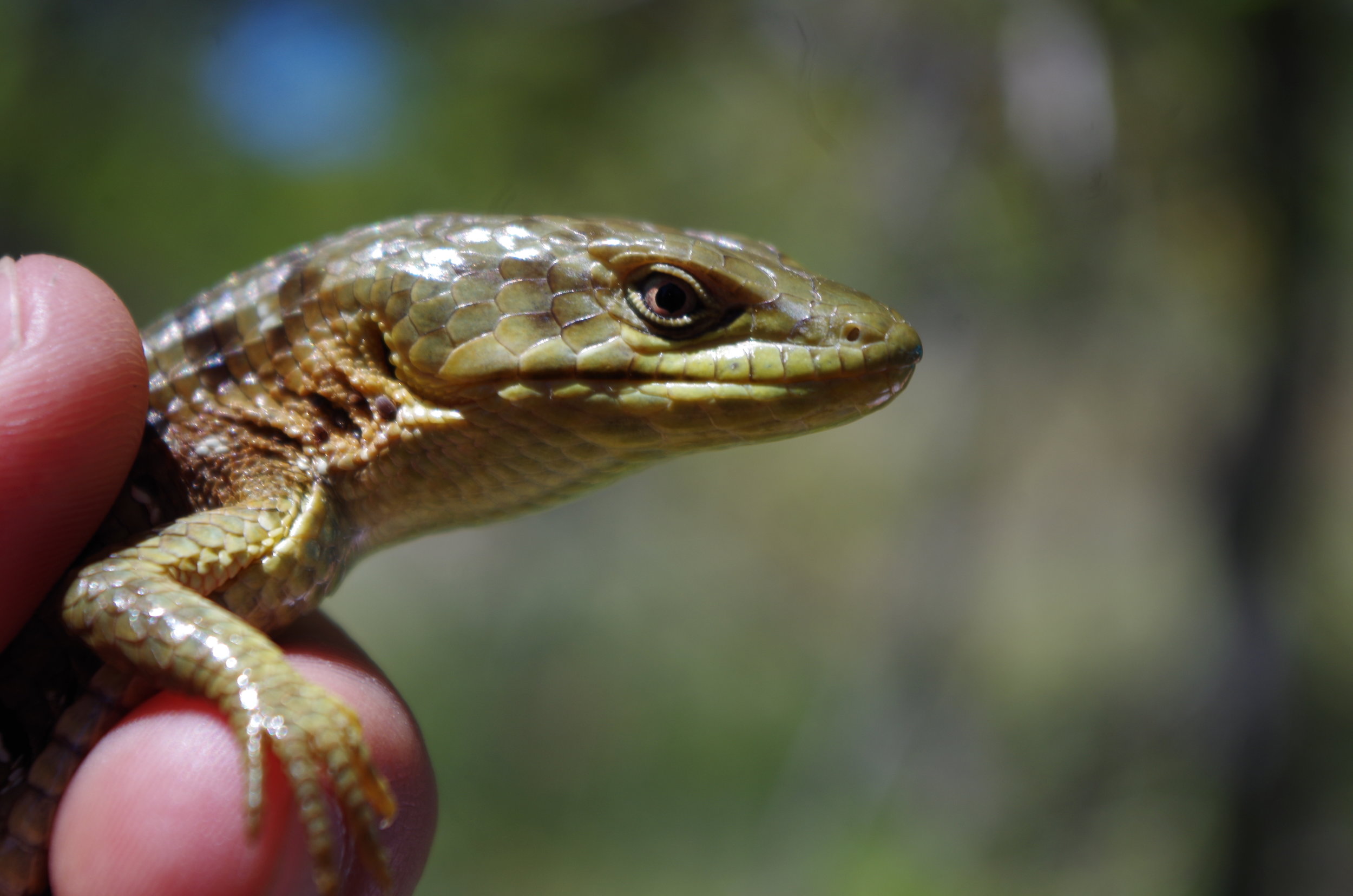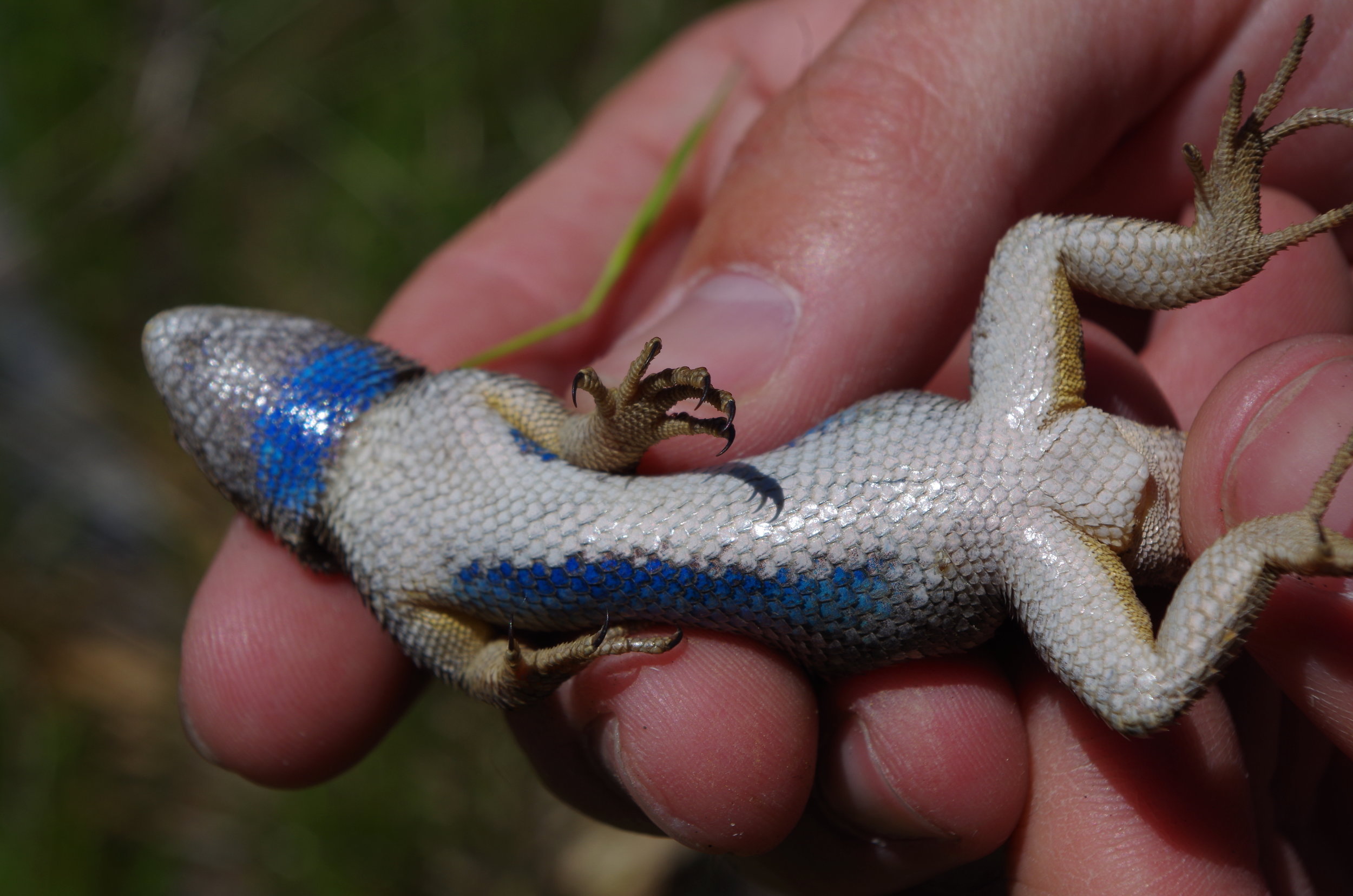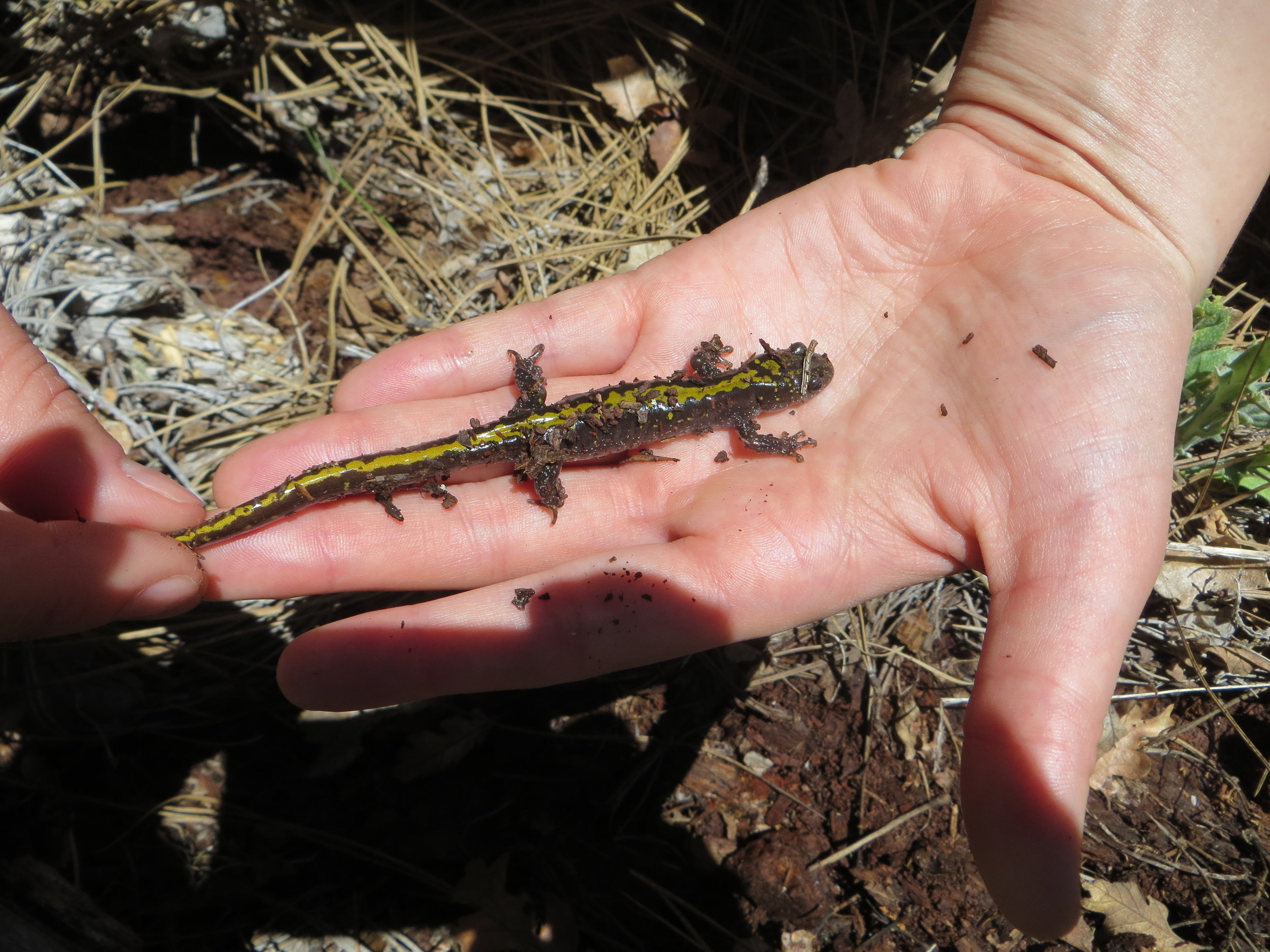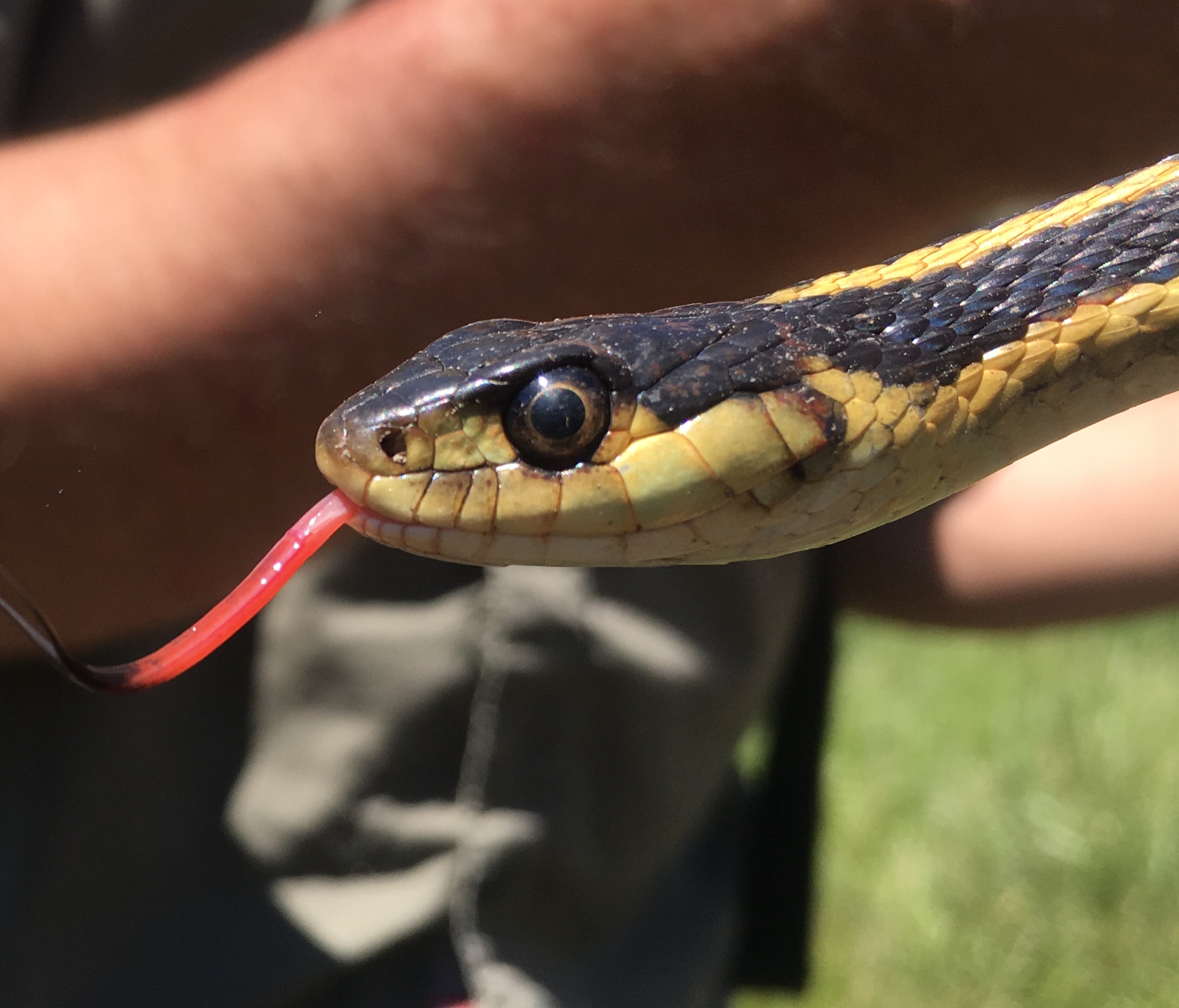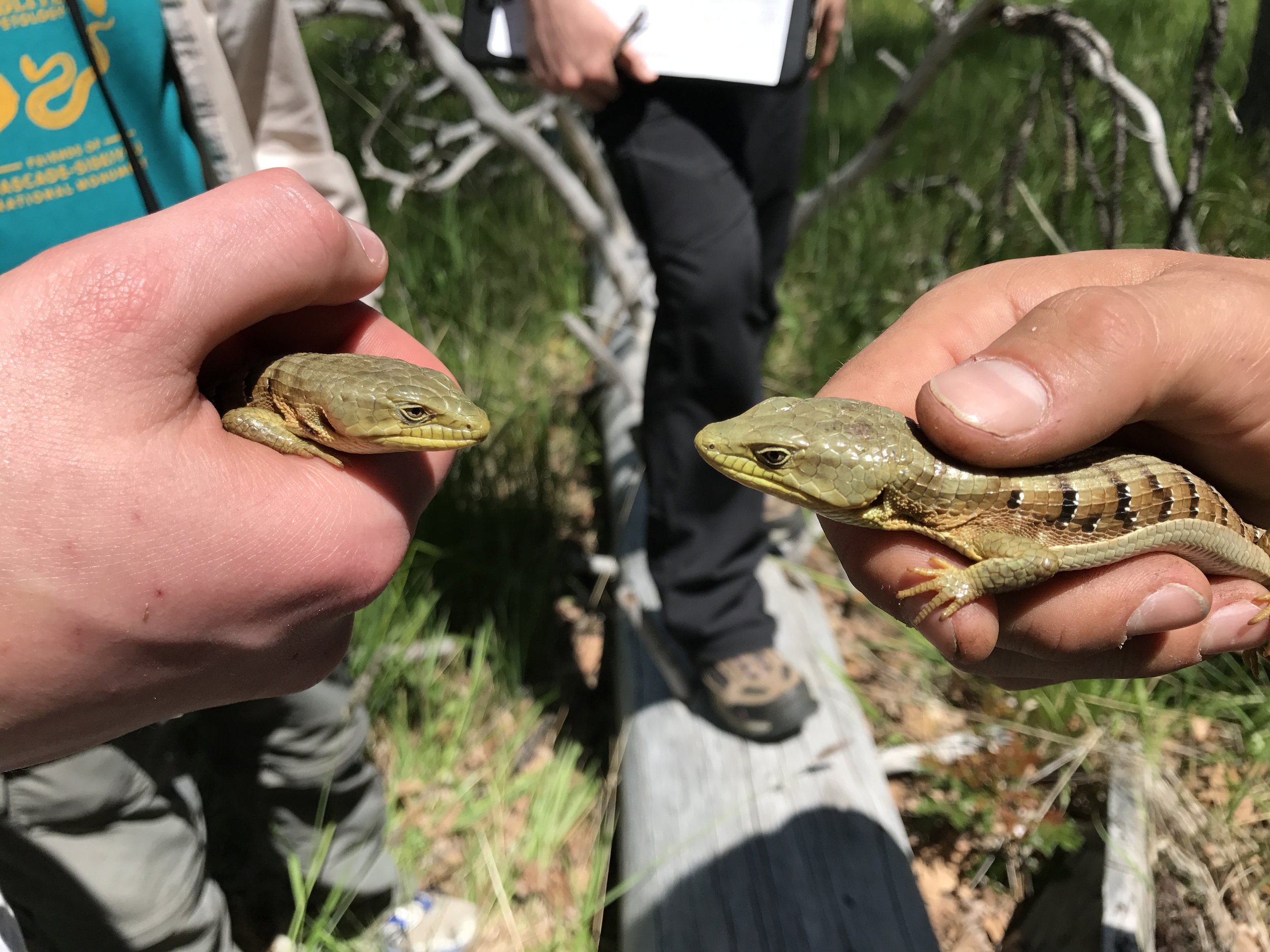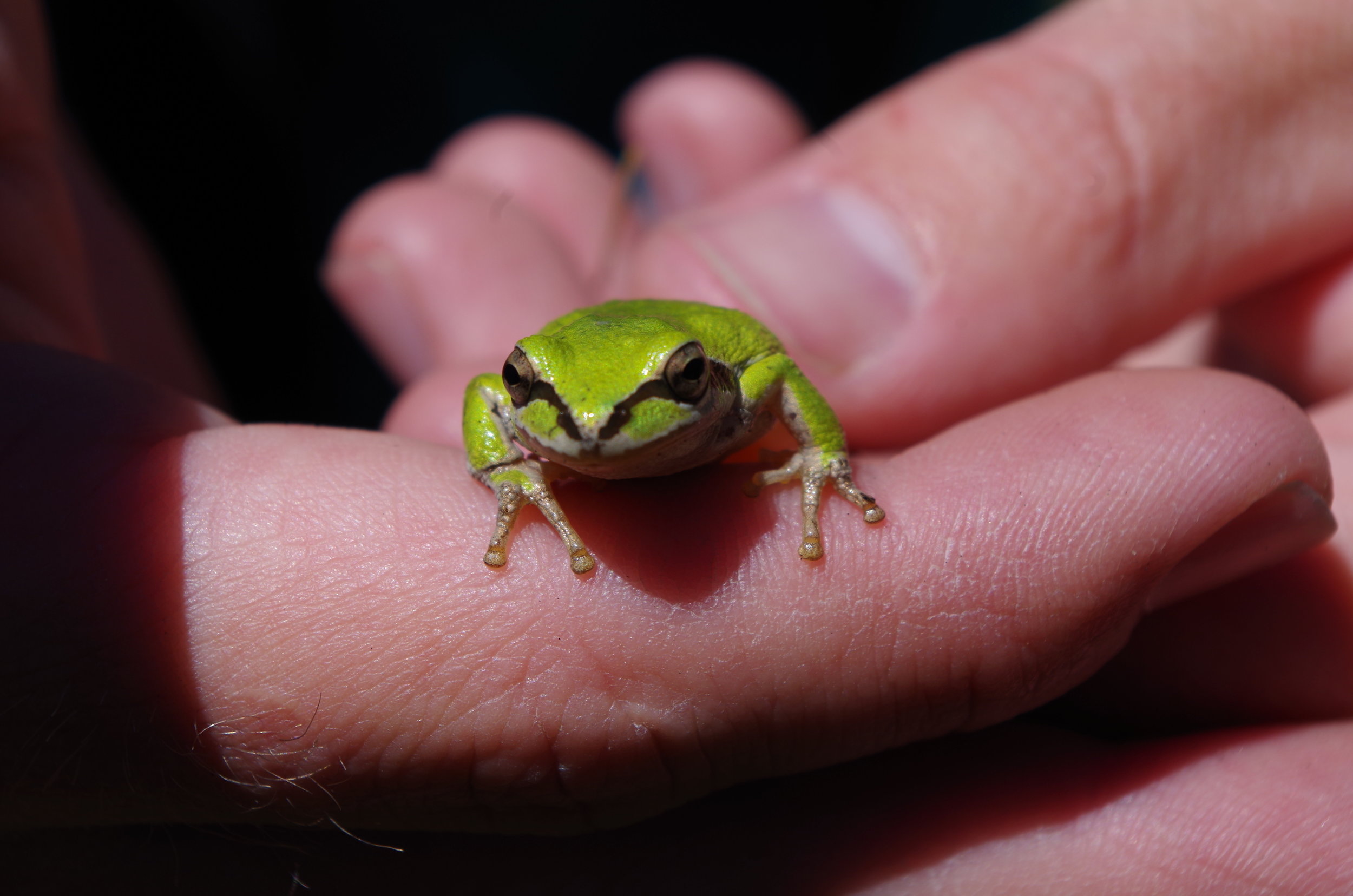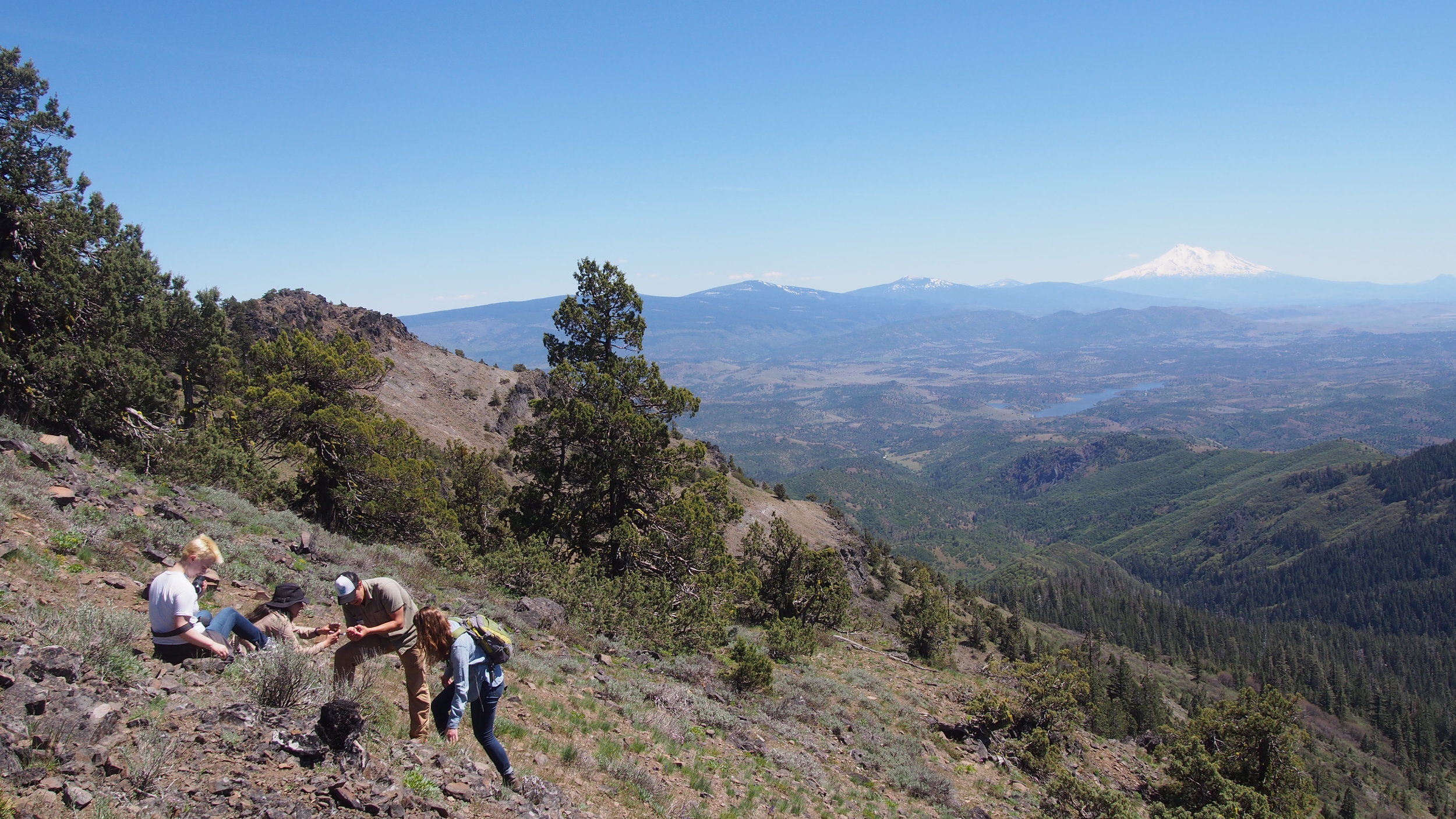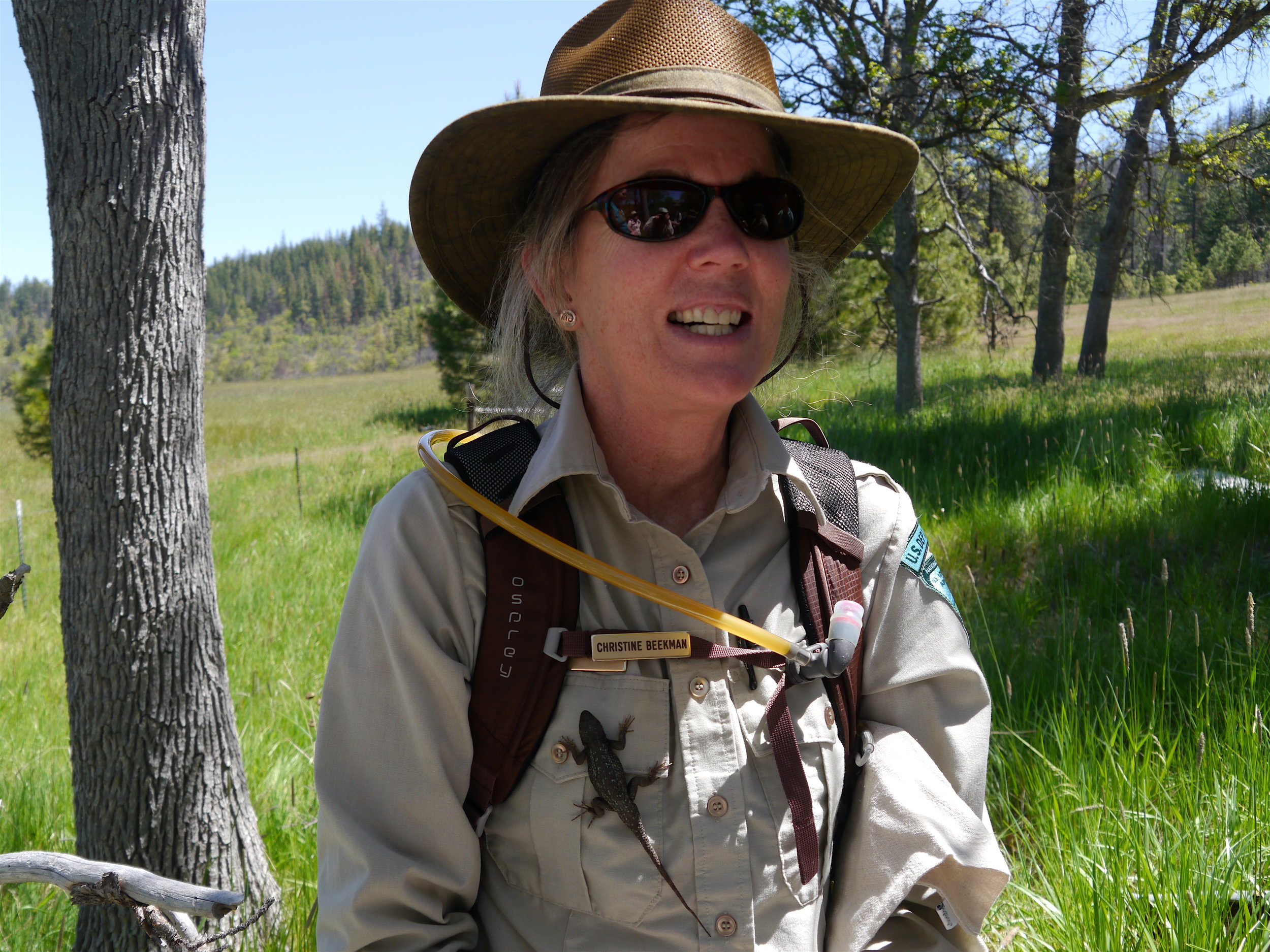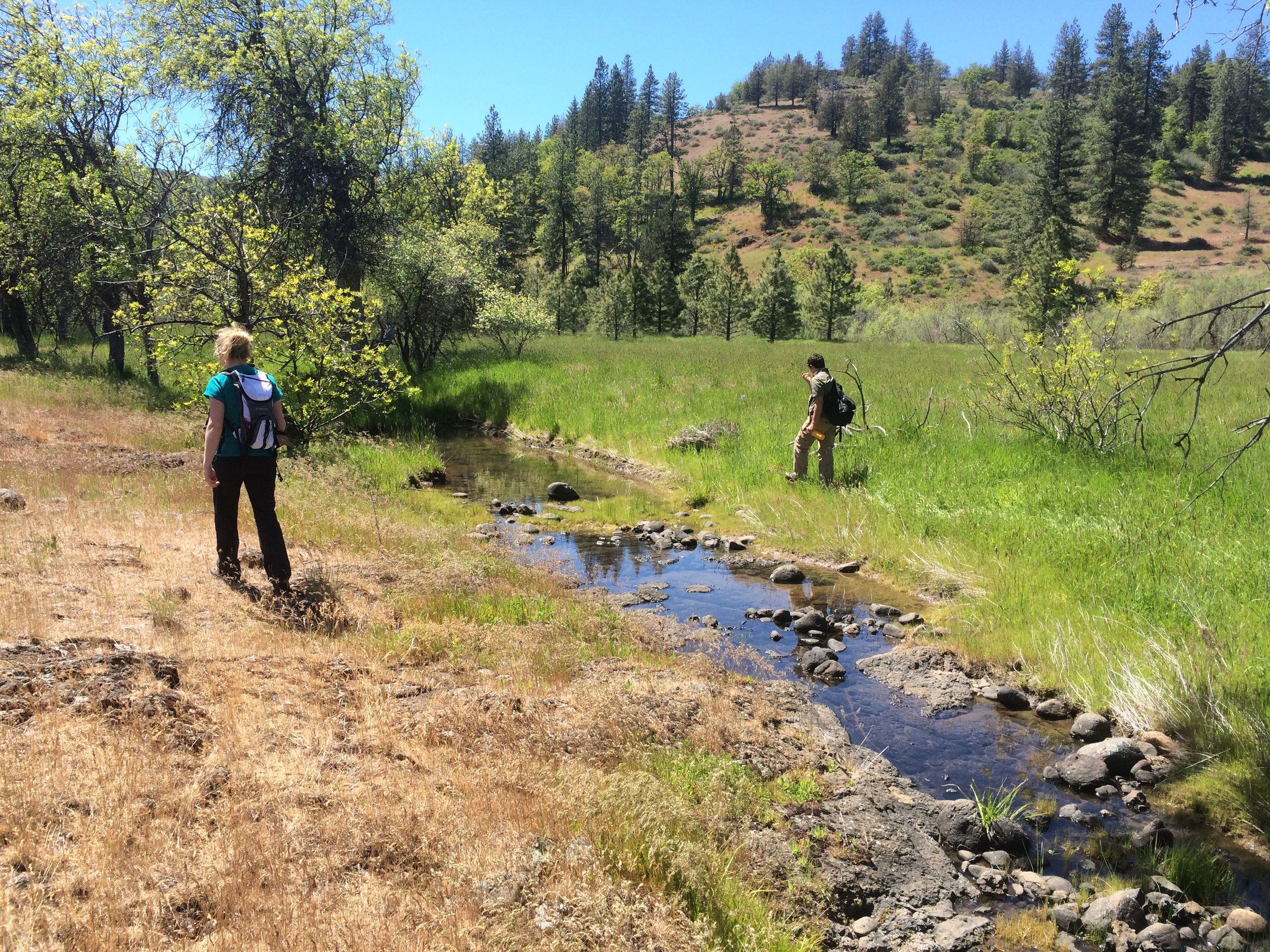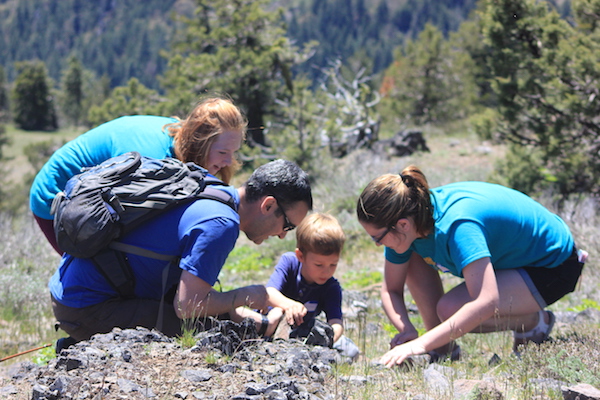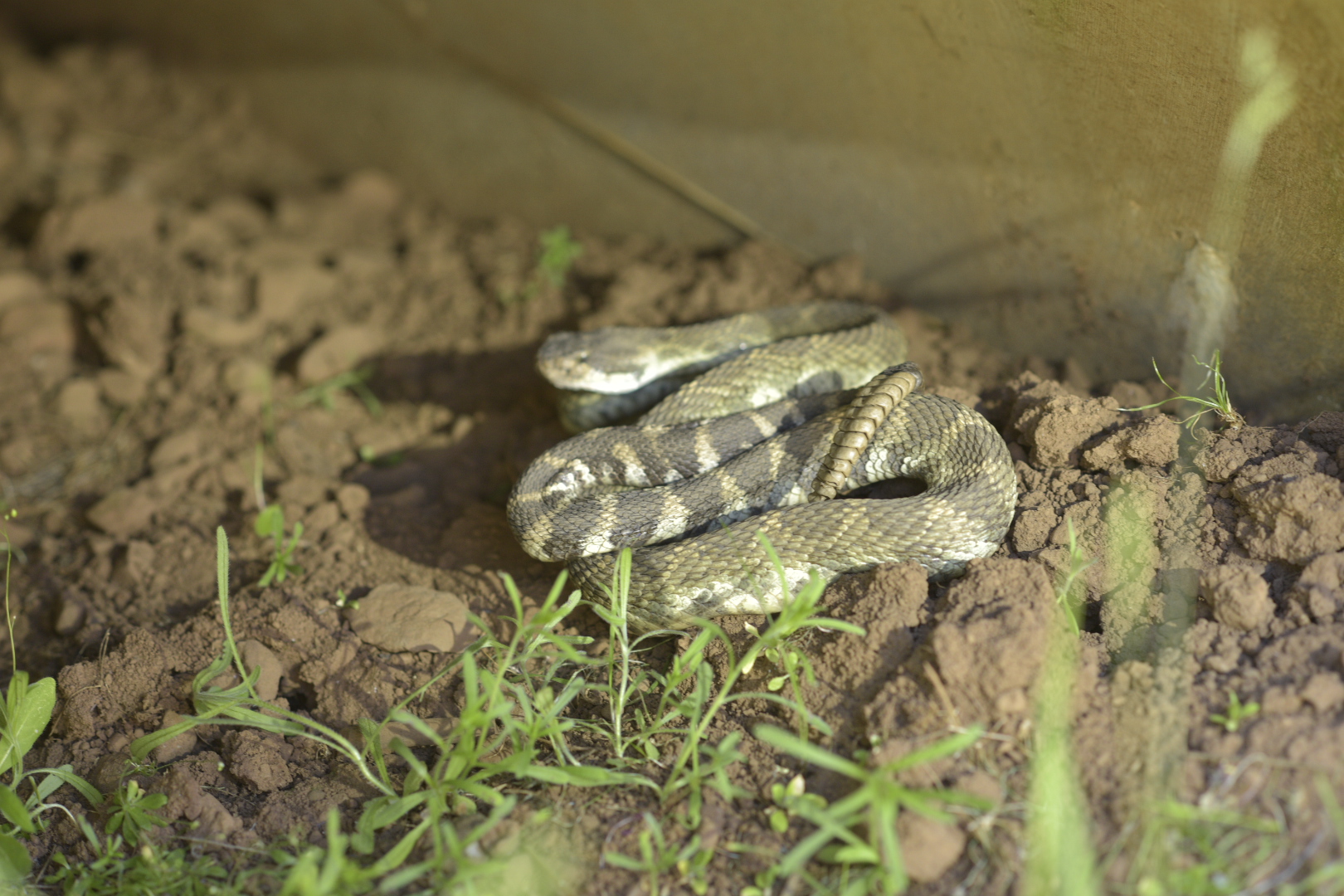Birds called through the tall branches of Douglas-fir, white fir, incense cedar, and ponderosa pine that lined the trails of the Cascade-Siskiyou National Monument. Their needles were warming fast, a spicy feast to the nose, as the morning of Saturday, May 20 dawned sunny and clear.
Dr. Michael Parker, SOU Biology Department Chair, demonstrates how to tie a lasso. TPD photo
Sixty (60) eager citizen scientists and eighteen (18) student leaders gathered for the Friends of Cascade-Siskiyou National Monument’s third annual BioBlitz. This event was in collaboration with Southern Oregon University, led by Dr. Michael Parker, Biology Department Chair, with his SOU Biology - Herpetology class. The recently melted snow undoubtedly meant abundant snakes and lizards; frogs, toads and salamanders; and even turtles waiting to be found in the diverse habitats of the Monument.
BioBlitz 2017 – Herpetology is the first large-scale survey of the herpetofauna (amphibians and reptiles) within the Monument, where citizen scientists worked alongside SOU students to document the distribution of the many species of herps within the Monument’s recently expanded boundaries.
SOU Biology student leader catches a snake in each hand. Shane Stiles photo.
Student leaders, distributed amongst nine sites, led participants to diverse ecosystems within the Monument. The Sampson Creek Preserve, Mayfield Gardens, Upper Parsnip Lakes, Baldy Creek, Boccard Point, Agate Flat, Shoat Springs, Box-O Ranch, Jenny Creek (upper and lower), the Oregon Gulch, and Fredenburg Meadow were all systematically surveyed for herps between 10:00 am and 3:30 pm.
Collectively, the groups observed 18 species including 5 lizards, 6 snakes, 1 turtle, 3 salamanders and 3 frogs (including one boreal toad). By far the most widespread and frequently encountered species was the Western Fence Lizard that accounted for 76% of all observations and was found at all 9 locations. Racers, Southern Alligator Lizards and Western Skinks were also frequently encountered, occurring at 7-8 of the 9 sites surveyed.
The three least common species encountered were the Striped Whipsnake, Western Pond Turtle and Boreal Toad, each represented by a single individual at a single site. This initial inventory that was collected at the BioBlitz now provide the basis for future surveys and focused research into biodiversity on the Monument, all of which is essential for its protection.
BioBlitz 2017 highlighted the Monument as a community and educational resource, increasing public appreciation of the uniqueness of the CSNM and providing a hands-on opportunity to learn more about it. Participants were excited to visit diverse parts of the Monument they had never been and spend the day in the company of interesting people. One participant remarked, “The event was amazing. I would always come to any of these kinds of events. It really gives folks a chance to learn and get closer to nature.”
BioBlitz 2017 - Crater Renaissance Academy participants at Boccard Point, with Mt. Shasta Vies. Caroline Burdick photo.
Participants did get close to their study animals, catching lizards and snakes to identify species and sex as well as taking close-up photos of amphibian egg masses and reptile scales to identify later in the lab. The group that visited Boccard Point got to see biodiversity in action. Standing before a sweeping view of Pilot Rock, Mt. Ashland, and Mt. Shasta, Western Fence Lizards and Sagebrush Lizards lounged on neighboring rocks while Cascades’ incense cedar and white fir gave way to Great Basin sagebrush and juniper.
Undoubtedly, the vistas of the Monument, as well as its characteristic flora and fauna, serve as continual inspiration for scientists and recreational visitors alike. BioBlitzes are essential to keeping this fire of inspiration alive. As one participant so poignantly remarked, “Thanks for letting me be a part of this! If only there was more time in a day! (I didn’t want to leave ☺!)”
by Katie Boehnlein, BioBlitz 2017 Coordinator
SOU Environmental Education graduate student
Photo Gallery - BioBlitz 2017 Herpetology. To view captions, hover top right of each photo.
